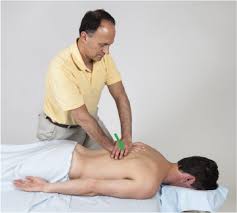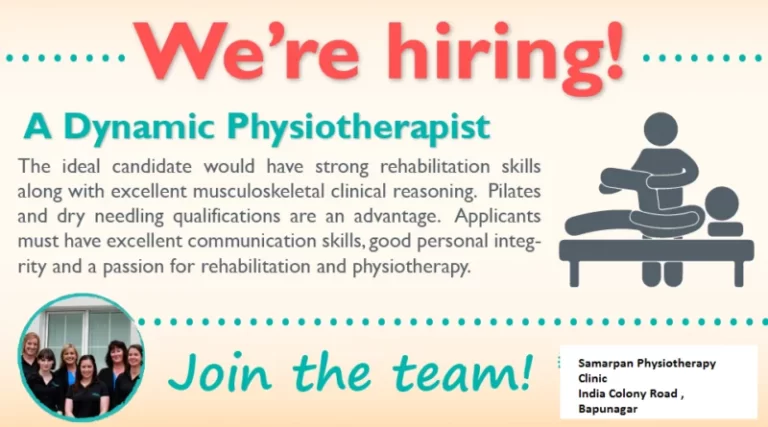Hip Flexors Tightness: Treatment, Exercise
“Hip Flexor’s Tightness” is one of the most common conditions in the hip region, by which the hip flexor muscles are tight causing stiffness in the joints of the hip region. The hip flexors are the muscles around the front of the hip, which include psoas major, psoas minor, iliacus, and iliopsoas. These muscles are responsible for moving the thigh in front of the pelvis in order to bring about forward motion. When these muscles are tight, it leads to stiffness in the hip region.
Hip flexor’s tightness is a common complaint in people who run, play sports, or sit for long periods of time. It is caused by a shortened iliopsoas muscle, which runs from the front of the abdomen down to the thighbone. A shortened iliopsoas can pull on the ileum, which is part of the lower spine, and cause pain and discomfort. Tight hip flexors can also make it difficult to maintain your balance and posture when you stand.
The hip flexors are a large muscle group which originate at the lower back and pelvis and attach to the upper leg. They are primarily responsible for moving the thigh up towards the trunk. The main hip flexors are the iliopsoas muscle, which connects to the inside of the lumbar spine, psoas major which connects to the inside of the 12th rib, and the rectus femoris.
The iliopsoas is one of the muscles that are important to the movement of the hip joint. It originates in the lumbar spine and crosses the hip joint where it inserts on the lesser trochanter of the femur. It is innervated by the L1-L3 segments via the femoral nerve.
Table of Contents
What Exactly Are Tight Hip Flexors?
The term hip flexors muscles refers to a group of muscles in and around the hips that help move the legs and the trunk together, as when you lift your leg up, bending at the hip (Hip flexion).
The Hip Flexor Muscle Group are :
The hip flexor muscles list includes the following muscles :
- iliopsoas muscle
- Rectus femoris muscle
- Sartorius muscle
- Pectineus muscle
- tensor fasciae latae (TFL)
1 ) iliopsoas muscle :
iliopsoas is actually two different muscles that helps to stabilize the lower back: the psoas muscle and the iliacus muscle.
The psoas muscle runs from the lumbar spine (lower back), through the pelvis, and attaches to the femur (thigh bone).
The iliacus muscle attaches the pelvis to the femur and is used to rotate the thigh.
2) Rectus femoris muscle :
The rectus femoris attaches the pelvis to the knee.
It is also the quad muscle that is used when performing squats or lunges.
3) Sartorius muscle :
sartorius running from the pelvis to the knee, the sartorius muscle is used to flex the knee and leg.
4 )Pectineus muscle :
More commonly known as the groin muscle, the pectineus is used in hip flexion.
It is also used for thigh rotation and adduction.
5) tensor fasciae latae :
tensor fasciae latae is a tight band of tissue along the front of the thigh. It runs from the lower part of the outside of the pelvis to the upper part of the inside of the upper arm. It can be stretched by standing on one leg, lifting the other leg off the ground, and pulling down on the foot with your arm. The fasciae latae is most prominent when you are standing with your legs together at the same height.
Together these muscles creates Hip flexion movement, the movement and tightening of muscles that allows for flexing of the hip joint.
They also help to stabilize and strengthen the lower lumbar spine.
Signs You Have Tight Hip Flexors :
The obvious sign, of course, is that these muscles just feel tight.
You try to stretch them and they don’t move much. But there are other signs too.
Tight hip flexor muscles can impact several other areas of your body, so you might have :
1) Tightness or a pain in your lower back, especially when long standing or lifting weight.
2) Poor posture and difficulty standing up straight. (Hip slightly flex)
3) Pain in the Hip area.
Test For Hip Flexor Tightness :
You can also do a test to evaluate tightness :
- Supine Lying on your back on a table or bench and pull one knee up toward your chest and hold it there.
- Let the opoosite leg relax downward over the edge of the table
- If your hip flexors are stretchable you should be able to fully extend the thigh so its parallel to the floor and bend the knee to 90 degrees without the thigh rising up.
Any difficulty with these movements indicates tight hip flexor muscles.
What Causes Hip flexors Tightness?
The most common cause of tightness is long sitting position for too long is a major reason in tightening the hip flexors.
When you sit all day at a desk mainly office worker’s, the iliopsoas muscle, in particular, shortens, making the flexors tight.
- Some sports-person are also more prone to get hip flexors tightness. Runners use the hip flexors, especially the iliopsoas, to lift the leg up with each stride. This repeated shortening of the muscle isn’t compensated for by a lengthening movement. Runners often end up with tight hip flexors for this reason.
- Having a weak core can also be an issue that contributes to tight hip flexors. Because these muscles are connected to and stabilize the spine, they often take over when the core is not strong. This can lead to tightening and pain.
Other Possible Causes are :
There are many different possible causes of hip flexors tightness. These include:
Lack of exercise :
Sedentary lifestyle – Not partaking in regular physical activity can lead to hip flexor tightness. Under use of the hip muscles can cause the muscle to degenerate and become weak, which is known as muscle atrophy.
Sitting for long periods :
Staying seated for extended periods can cause weakness in the psoas muscle. This is because the muscle does not work as hard as if the person were standing.
Osteoarthritis of the Hip :
Osteoarthritis in the hip can also cause weak hip flexors. It can also cause Trusted Source weakness in the knees, hamstrings, and buttock muscles.
Lateral transpsoas surgery :
Lateral transpsoas surgery, a type of operation on the spine, can often leaveTrusted Source a weakness in some hip flexor muscles.
Cerebral palsy/ stroke : hip flexors tightness may be present since birth of the child, DUE TO THE PRESENCE OF THE CONGENITAL diseases like CEREBRAL PALSY OR PARALYTIC CHILD
How to stretch tight hip flexors ?
Stretching exercise of tight Hip flexors is best treatment option, Here we update few easy to home exercise to improve flexibility of tight hip flexor’s.
Standing Hip Flexor Stretching exercise :
Standing Hip Flexor Stretching exercise is a best option for those who not able take kneeling position. You can easily control the intensity of the stretch by shortening or lengthening the distance between your front foot and back foot.
Steps to Do exercise :
- In Standing position with your feet hip-distance apart.
- Step your right foot forward into a split or staggered stance.
- Contract your core muscles and tuck your pelvis. You can place your hands on the right leg.
- Keep your back leg straight and slowly lunge forward with the right leg until you feel a stretch in the front of your hip, groin, and thigh of your left side.
- Hold this position for 10 to 15 seconds. You should not feel any low back pain. If you do, ease off of the stretch.
- Slowly return to the starting position and doing same with opposite leg.
- Perform the standing hip flexor stretch 8 to 10 times on each side.
Kneeling Hip Flexor Stretching exercise :
Kneeling Hip Flexor Stretching exercise allows you to get a deep stretch in your iliopsoas muscle. Like the standing hip flexor stretch, you can control the depth of the stretch by lengthening or shortening your leg stride.
Steps to do exercise :
Take into a half-kneeling position with the right leg about two feet in front of the left leg.
The right knee should make a 90-degree angle. You may want to use a soft mat for cushioning.
Place your hands on your right knee, maintain an upright posture, and lean slightly forward until you feel a gentle stretch in the front of your hip, groin, and thigh of your left side.
Hold this position for 10 to 15 seconds. You should perform exercise slowly and gradually. If you feel any pain, ease off of the stretch.
Slowly return to the first position and change sides.
Perform the kneeling hip flexor stretch 8 to 10 times on each side.
Bridging exercise :
The bridging exercise stretch your tight the iliopsoas muscle and the same time also strengthen the gluteal muscles.
Steps to do exercise :
- Take supine lying position on soft exercise mat on the floor.
- Lie on your back with your arms at your sides, knees bent and feet flat on the floor.
- Contract your gluteal muscle and lift your hips to create a bridge between your shoulders and knees.
- Raise your hips until you feel a gentle stretch in the iliopsoas muscle in both legs.You should do exercise gradually and pain free mode.
- Hold this position for 10 to 15 seconds.
- Lower your hips to the floor and repeat 8 to 10 times.
Hip Flexors Bed Stretching exercise :
Hip Flexor Bed Stretching exercise is mostly selected by physiotherapist for rehab purposes. This stretching exercise is also easy to do home exercise.
Steps to do exercise :
- Supine Lie flat on your back on your bed and position yourself with your right leg closest to the edge of the bed.
- Slowly let your right leg hang down to the side of the bed. Your left leg can stay bent with your foot on the bed.
- You will feel a gentle stretch in the hip flexor. Ideally, your foot will hanging over the ground instead of touching. But it’s okay if it does touch.
- Deepen the stretch by gently bending your knee. You should feel this across the thigh and front of the hip.
- Hold this position for 10 to 15 seconds.
- Return the right leg to the bed and rotate so your left side is closest to the edge of the bed.
- Perform the hip flexor bed stretch 8 to 10 times on each side.
Table Psoas Stretching exercise :

For a deep stretching exercise that really fully lengthen your flexor’s of the hips, try the table psoas stretch. Skip this exercise if you have lower back or knee pain.
Steps to do exercise :
- Select a table that is slightly lower than hip level.
- Stand with your right side next to the table and lift your right leg behind you and lay it onto the table with the knee facing down. This leg will be straight. You can place a folded towel under your knee to relieve any pressure from the table.
- Place your right hand on the table in front of you. Your standing (left) leg should be slightly bent.
- Slowly move into the stretch by lifting the chest up tall and opening up the hip flexor area. Stop when you feel the stretch in your right hip.
- Hold this position for 10 to 15 seconds.
- Release the stretch and repeat on the other side.
- Perform the table psoas stretch 5 to 7 times on each side.





One Comment